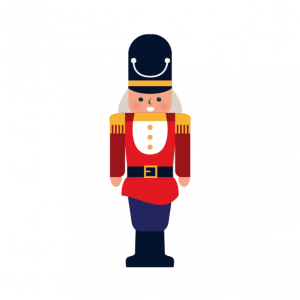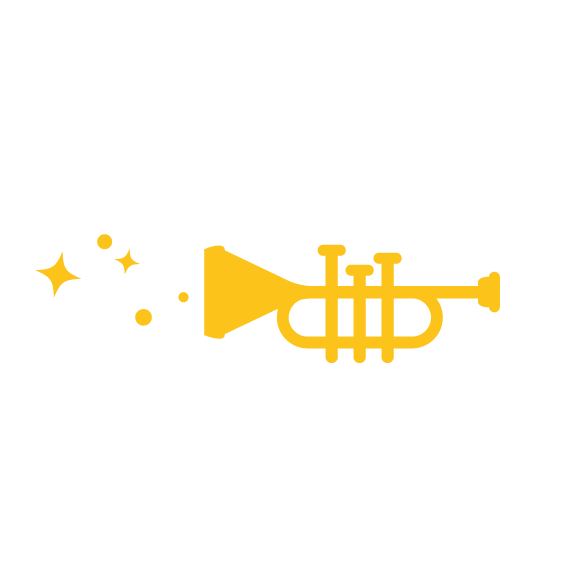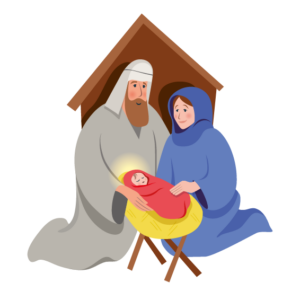Proudly presenting the Vienna Christmas Market
When the many shopping streets and Advent markets light up the city of Vienna in the run-up to Christmas, one place shines especially brightly: the Vienna Christmas Market is considered one of Europe’s biggest and most beautiful Christmas markets. Year in and year out, countless guests from Austria and abroad visit and marvel at the traditional Christmas market at Vienna’s Rathausplatz.

Interesting facts
The Christmas Market past and present
180 years of the Christmas Market in Vienna
For almost 50 years, the Vienna Christmas Market has been lighting up the Rathausplatz each year. The market stallholders opened their Christmassy wooden huts here for the first time in 1975. But in reality, the Christmas Market has been around for much longer – even if it wasn’t always called that: from the year 1600, the “Thomas Market” was held at Vienna’s Graben square. This market was named after the Apostle Thomas, who was one of Jesus’ twelve disciples. In 1772, the market relocated to Freyung square and was known as the “St Nicholas and Christmas market”. When this market was then moved to Am Hof square in 1842, it was given its present-day name of “Christkindlmarkt”. It’s fair to say, therefore, that the Vienna Christmas Market has been around for at least 180 years.
The Vienna Christmas Market today: presents galore, sensory indulgence and Christmas spirit
A lot has changed at the Vienna Christmas Market. The range of products on offer and the programme have been diversified. This means that today, Vienna’s Rathausplatz is home to more than just a Christmas market designed to impress with artisan handicraft, jewellery stalls and punch stands.
Christmas in the park
The Rathauspark surrounding the Christmas market also creates a wonderful Christmas atmosphere for young and old alike with its famous Heart Tree, a small but exquisite culinary offering and other traditional and fun attractions. Here, visitors will also come across a giant Advent wreath from the Evangelical Church. As to why it features more candles than usual? Back in 1839, in an attempt to shorten the time until Christmas for children from the poorest families, the founder of the Diakonie, Johann Hinrich Wichern, lit a candle every day on a cartwheel decorated with 20 small red candles and four large candles in the “Rauhes Haus” of the Diakonie in Hamburg. It is this idea that gave rise to what we have come to know today as the Advent wreath. By the way: since 2016, it’s also been possible to go for a spin around the park on ice skates: the Ice Dream at the Christmas Market brings winter and festive Christmas spirit to the city and the people, no matter the weather.

Oh Christmas Tree
The Christmas tree at the Vienna Christmas Market represents the heart of this traditional Christmas market. Each year since 1959, a splendid conifer grown in the magnificent countryside has been donated by a different Austrian province or the province of South Tyrol in northern Italy.
For the seventh time Lower Austria has donated a tree in 2024. The spruce, which was around 30 metres tall and around 80 years old, came from the market town of Rastenfeld in the Waldviertel. The tree was erected on the town hall square on 29 October and was decorated with 2,000 LED lights and, for the first time, around 1,000 Christmas baubles.

But where does the tradition of the Christmas tree actually come from?
The Christmas tree as we know it today originates from a Protestant custom. As far back as around 300 years ago, the living rooms of wealthy Protestant families featured a little Christmas tree. It is largely thanks to the imperial family and their influence on the general public that the Christmas tree eventually became popular among Catholic families too. In 1816, Henriette von Nassau-Weiburg, the wife of Archduke Carl, had a marvellously decorated Christmas tree erected for the Christmas festivities. More and more families took a liking to this new custom, and several followed the imperial example.
A Burgtheater actor inspired Viennese locals
But Burgtheater actor Heinrich Anschütz, well-known in the 19th century, also played a part in the popularity of the Christmas tree at Christmas Eve celebrations in Vienna. When he moved from Germany to Vienna in 1821, he didn’t want to miss out on the Christmas tree tradition of which he had grown fond, and set out to search for a suitable fir tree. Since he was a well-known figure, his preparatory purchases for the Christmas present-giving drew attention. His friends copied his example and thus things took their course, as he himself described: “I can truly say that my arrival in Vienna contributed not insignificantly towards the rapid general acceptance of the Christmas festivities. For the very next winter, entire forests were being ceremoniously carted to Vienna, and all the toy manufacturers and retailers were preparing for the new market conditions.”


